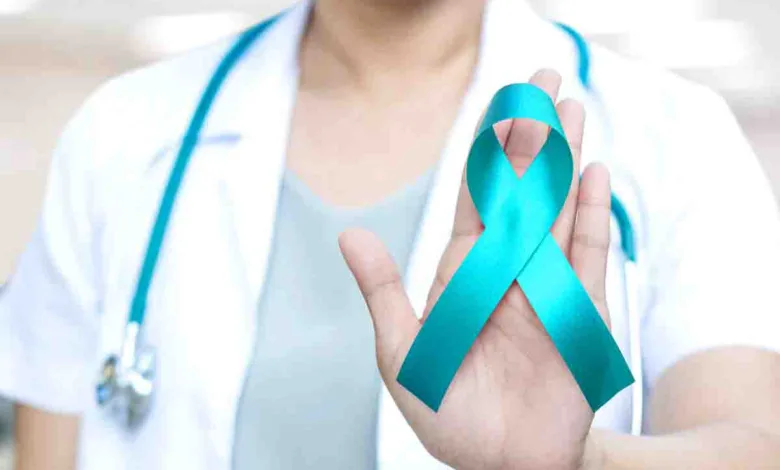Cervical cancer & the Indian Nari’s tomorrow: Making the case for HPV vaccine awareness through PPP

GUEST COLUMN
Saturday, 03 February 2024 | Nandini Sinha
While Dr Sharma, a renowned paediatrician, was disconcerted at my mother’s ignorance of the HPV vaccine in view of her concurrent yet limited knowledge of cervical cancer, studies show that this discrepancy between cervical cancer awareness and its preventive methods is not uncommon among Indian women. “You’re lucky that I asked. And you’re luckier that I make it a point to keep them here at the clinic,” he murmured.
Dr Sharma’s response reflects another reality about the HPV vaccine in the Indian context- despite its availability, it is not included in the country’s universal immunisation coverage programme, partly due to competing vaccine priorities, and partly due to significant financial constraints, both of which restrict women’s awareness of and access to these vaccines. Indeed, we were lucky to have encountered his well-stocked refrigerator.
At the time, I was only eleven years old and would go on to receive all four doses well within the vaccine’s target age range. But my mother was forty, and almost missed her chance to be protected against cervical cancer, the largest burden of which is currently borne by Indian women, as reported by PATH, a burden that is likely to increase with time if prevention is not prioritised. Indian women are making strides and contributing to the larger welfare of the nation, not just through some of their more traditional roles as homemakers, but also as indispensable leaders across academia, governmental bodies and the economy. This calls for drawing on our ethos, which is characterised by a vehement collectivism, to protect and promote the Indian Nari’s tomorrow, and consequently, the country’s tomorrow, by sounding the bells about this immunisation, which has the potential to prevent more than 90 per cent of HPV-related cancers, and by advocating for its diffusion among adolescent girls.
The hurdles of limited vaccine awareness, availability and campaign financing can be crossed through a singular leap by generating demand through public-private partnerships (PPPs) funded by Gavi, and by capitalising on the strengths of State governments, local health departments, community leaders and household brands while leveraging the principles of corporate social responsibility to inspire real change. All of these stakeholders would uniquely contribute to the mission. While local government, health and community leaders could help dispel misinformation about vaccine safety and mobilise trust respectively, the private sector could build on their marketing forte to raise awareness of the safety and efficacy of the vaccine by highlighting relatable vaccination success stories and emphasising the greater good that is borne out of looking out for women’s health. These two dimensions become paramount in light of prevailing vaccine hesitancy engendered by the Covid-19 infodemic. It would also be worthwhile to put women at the forefront of such campaigns, to foster a strong sense of empowerment, empathy and comfort in the context of a rather gendered disease with its stigma largely afflicting women.
The tricky part relates to addressing the nuances implicit in advocating for adolescent girls to be vaccinated against a sexually-transmitted virus. Some parents see HPV testing and vaccinations as indicative of distrust and promiscuity which tarnish familial reputation. Others worry that the vaccine incites pre-marital sexual relations which are predominantly deemed unacceptable. For parents with these concerns, this is the ideal age to get your daughters vaccinated. There is evidence that the HPV vaccine does not increase the sexual activity of girls relative to those who have not received it. There is also ample evidence on its safety and manageable side effects. I encourage you to ask your trusted doctor for more information.
In the words of Howard K Koh, Professor of Public Health Leadership at Harvard University, “ambiguity is always one’s companion in public health,” and acknowledging this inherent ambiguity, along with transparency about the benefits andlimitations of the vaccine, is what will drive change. Therefore, to be sure, I am not disputing the fact that these vaccines do not protect against all HPV types. Neither do they have a 100 per cent efficacy rate. However, evidence shows that they do protect against the most aggressive types of cervical cancer and significantly reduce its incidence, even with a single dose. Financing their availability may also prove to be costly, but countries like Uganda have shown that it is possible to achieve this goal by utilising existing capabilities across different sectors.
Dr Sharma asked about the HPV vaccine. My mother answered. In an ideal context, she would knowto ask too. In an ideal context, she would receive the vaccine at the same age I did. As would most, if not all, women who would then go on to lead healthy, fulfilling lives. If we come together, this vision can be realised. Take the first step by learning more about HPV. And keep the conversation going.
(The author is a Master of Public Health candidate, Yale University. Views expressed are personal)






